Welcome to RennTech.org Community, Guest
There are many great features available to you once you register at RennTech.org
You are free to view posts here, but you must log in to reply to existing posts, or to start your own new topic. Like most online communities, there are costs involved to maintain a site like this - so we encourage our members to donate. All donations go to the costs operating and maintaining this site. We prefer that guests take part in our community and we offer a lot in return to those willing to join our corner of the Porsche world. This site is 99 percent member supported (less than 1 percent comes from advertising) - so please consider an annual donation to keep this site running.
Here are some of the features available - once you register at RennTech.org
- View Classified Ads
- DIY Tutorials
- Porsche TSB Listings (limited)
- VIN Decoder
- Special Offers
-
OBD II P-Codes - Paint Codes
- Registry
- Videos System
- View Reviews
- and get rid of this welcome message
It takes just a few minutes to register, and it's FREE
Contributing Members also get these additional benefits:
(you become a Contributing Member by donating money to the operation of this site)
- No ads - advertisements are removed
- Access the Contributors Only Forum
- Contributing Members Only Downloads
- Send attachments with PMs
- All image/file storage limits are substantially increased for all Contributing Members
- Option Codes Lookup
- VIN Option Lookups (limited)

Tool Pants
-
Posts
4,786 -
Joined
-
Last visited
-
Days Won
6
Content Type
Profiles
Events
Forums
External Paint Colors
Downloads
Tutorials
Links Directory
Collections
Store
Posts posted by Tool Pants
-
-
The clutch kit incuded the disc, pressure plate, and release bearing. While you can buy the individual parts, you should replace all 3. The disc is held together with rivets. When the disc friction material wears down it exposes the rivets. These rivets can score the flywheel and/or pressure plate. Don't care about the pressure plate because the kit includes a new one. If the flywneel is scored then list price for a new one is about $900. No dealer I know of will attempt to resurface it.
If you were in my area I would suggest the Renn Shop. http://www.therennshop.com/home3 The owner, Marvin, worked at 2 local dealerships and then opened his own shop.
I had the clutch on my 1997 Boxster replaced by Marvin. Dealer wanted $1,850. A independent $1,450. Marvin did it for $825. On your 1999 996 it is $895.
The rivets on my disc had scored the pressure plate, but this did not matter because the kit includes a new pressure plate. Fortunately the rivets had not scored the flywheel. Marvin will send a flywheel out to be resurfaced, but the recommends a new one. I was able to reuse mine.
In 9 years of ownership I never had a drop of oil on the ground from the rear of the engine. But once the car was on the lift and again when the transmission and flywheel were out, I could see seepage from the seal and/or intermediate shaft flange. I had Marvin reseal the back of the engine since the transmission and flywheel were out. That cost extra.
-
Some Boxster owners have done this. The base Boxster does not have the wiper dial, just a plug for the hole. They remove the plug and install a push button.
-
-
This has been covered before. Who told you that?
The mileage is stored in the instrument cluster. So if you buy a used cluster with say 30,000 miles on it and you put it in a car with 15,000 miles, then the ebay cluster when connected to your car will display 30,000 miles.
If you search around there are companies who can change the mileage to match your car. You have to ship them the cluster.
-
The difference between the MIN and MAX markings on the tank is not much, and it is hard to see the actual level. Fill it up to the MAX level when it is cold.
-
The foam liner/drain tray is under the top. You have already tried to seal the foam liner with tape and silicon. This is a picture of them removed from the car.
Some time ago there was a mssage from someone with a similar problem. The drains under the top were clear and water flowed to the ground, but water still entered the cockpit. Maybe someone can find the message. From what I remember. The drain tube had hole in it.
The drain tubes do not go straight down to the ground. If you shove something down the drain hole, like a coat hanger, you can poke a hole in the tube.
-
Should be merged with this. http://www.renntech.org/forums/index.php?s...mp;#entry112455
When I checked this out with the parts guy all that was in stock was Kluber Syntheso Glep. $28.11 for the tube.
http://www.klueber.com/start.cfm
Made in Spain. So I tasted it. Tasted like chicken - I mean like silicon grease that you can buy anywhere.
-
-
I have seen engine replacements at the local dealer and do not see them do anyhing to the DME. The old info in the DME, engine operating hours and such, remains with a replacement engine.
-
It did go"boom."
And here is another. From another UK message board.
And a Raby castle which I think Jake does not own.
-
The M96 motor has been called the disposable engine.
I am on several UK message boards. The way I remember it Autofarm started first, then Hartech.
http://www.autofarm.co.uk/about
http://www.hartech.org/buyers.html
Hartech himself is on the UK message board, Piston Heads.
http://www.pistonheads.com/gassing/
Auto Strarasse in Southern California is now in the business of rebuilding engines. So it has been said.
http://www.strasseauto.com/index.html
I forget where these pictures came from, but I think from Hartech on Piston Heads. It is a 996 3.6.
So, Jake, what do you think happened here?
-
-
Can you provide a link to the German forum?
-
The Boxster with a Corvette engine is a photoschop by local Boxster owner Barry Bronson. http://www.geocities.com/barrybronson/Hackster.html
He also has a Corvette.
-
Look at the info above the washer. 2000 with Beru should be 14 FGR 6 KQU. It has 4 side electrodes.
How often to change. This is the funny part. 1997-1999 2.5L used a 2 side electrode plug, and Porsche said to change at 30,000 miles. When the 2.7 and 3.2 came out in 2000 Porsche switched to the 4 side electrode plug, and said to change them at 30,000 miles.
Then for 2001 Porsche said to change them at 60,000 miles. The 2000 and 2001 engines are the same, as is the plug. I have asked mechanics if there is a reason for a 2000 to be 30,000 miles and a 2001 to be 60,000 miles, and no one knows why. 2000 is the funny year. 2001-2004 is 60,000 miles.
Then for the UK market Porsche cuts the 60,000 down to 48,000 or something like that. I forget what the 30,000 is cut down to for the UK market. I think 24,000 miles.
-
-
-
I have only tried to remove a tube once. Removed the coil, plug, and stuck my finger inside the tube and pulled it out with my finger. Engine was warm. What keeps the tube in place is the friction fit of the o-ring on each end, and the coil.
Porsche has a factory tool. I have never seen it because all the mechanics I know simply pry out the tube with a small prybar on the edge of the tube. Pic is an aftermarket version, but if I remember correctly it is like $100.
If you cannot pull them all out with your finger and don't want to pry them out, then you need something to shove inside the tube that you can expand inside the tube to grip the tube. Then you pull on the end of this something to pull the tube out. People have used a spark plug boot puller. Shove the puller inside the tube and expand it so it grips the inside of the tube. Then pull the tube out.
The plastic tubes may be brittle from years of heat, and plastic pieces fall into the cam cover. A mechanic I asked said not to worry, it does not harm the engine.
-
986 424 041 10 is listed for a 2003-2004.
What I think 98VSE6 23306 is the year and VIN number for a part. V is for 1997. 23306 is the serial number. I have never asked but that is what I have always thought.
For your 1998 there is a cable 986 424 041 06 but the part number has a U in front of it. That means when that part is used up and no longer available you use the next part number, 986 424 041 07.
-
-
-
-
Are you using Blackstone? When you send the sample in what info do you provide with the sample?
-





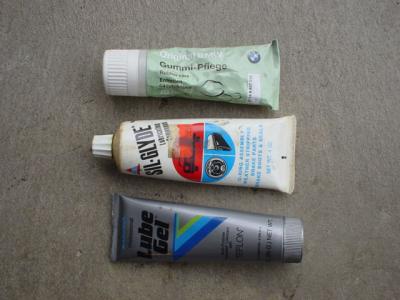
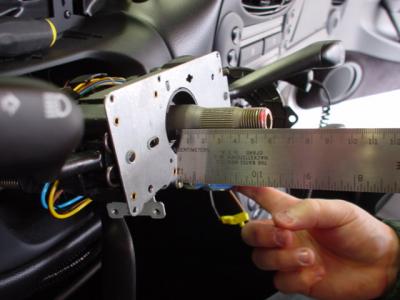









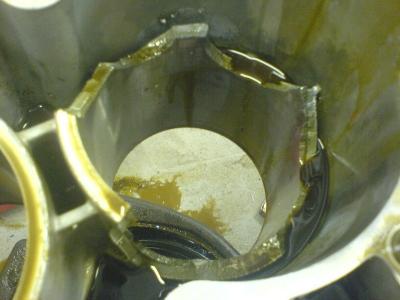



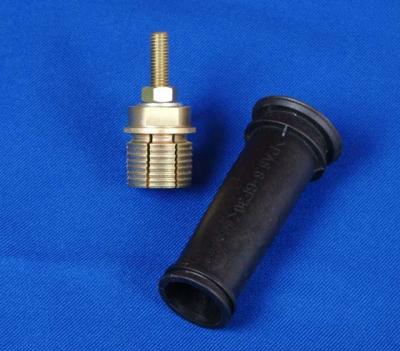


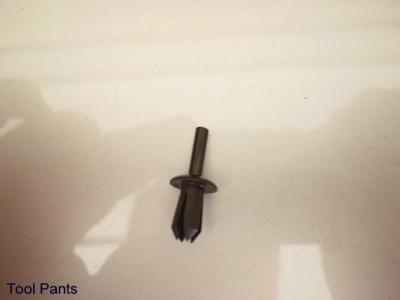
Rear disc wear on 2000 2.7 with 50k
in 986 Series (Boxster, Boxster S)
Posted
It looks like those rotors have started to rust out, and it does so from the rear of the rotor. The front of the rotor always looks fine. Only on the UK message boards have I seen pictures like that. Must be all the rain and/or the crap they put on the roads for winter.
Pictures from PGrimston on the Porsche Club Great Britain board.